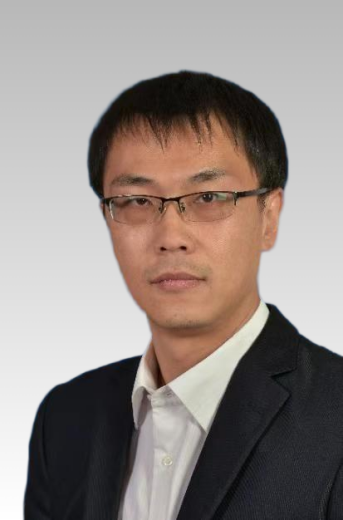Exploring the Frontiers of Computational Biology: An Interview with Prof. Hao Lin
We are proud to share that a Computational Biomedicine Editorial Board Member, Professor Hao Lin from the University of Electronic Science and Technology of China, has been recognized among the 2025 World’s Top 2% Scientists, a prestigious global ranking compiled by Stanford University.
As part of this special feature, on October 1, 2025, the Editorial Office of Computational Biomedicine had the honor of speaking with Prof. Lin about his research journey, his insights into the evolving landscape of computational biomedicine, and his vision for the future of AI-driven healthcare innovation.
About Professor Hao Lin

• 2025 Global Top 2% Scientist
• Outstanding Young Scientific and Technological Talent in Sichuan Province
• Member, Special Committee on Bioinformatics, China Computer Federation (CCF)
• Member of the Association for Computing Machinery (ACM)
Prof. Hao Lin’s research focuses on applying computational approaches to the study of proteins and DNA, covering frontier areas such as DNA regulatory elements, three-dimensional genomics, disease prediction and risk assessment, biological macromolecule recognition, and the physical mechanisms of biological regulatory networks.
His inclusion among the world’s top 2% scientists highlights his enduring contributions to bridging computational science and biomedical discovery. In the following interview, Prof.. Lin shares his reflections on curiosity, persistence, and interdisciplinary collaboration—the principles that continue to drive his scientific path.
Q1. What first inspired you to pursue computational biology? Was there a defining moment or turning point that shaped the direction of your research?
Hao Lin: Interest has always been the driving force that keeps me engaged in this field. To be honest, I cannot recall a single decisive moment—it feels more like a natural progression. If I had to highlight a turning point, it would be when I started my graduate studies and shifted from physics to bioinformatics. That transition marked the beginning of my journey into computational biology.
Q2. As a scholar named among the world’s top 2% of scientists in 2025, what do you see as your greatest strength or the key principle that has guided your research career?
Hao Lin: To be honest, I have never paid much attention to rankings, nor do I think I possess any special advantage. If I were to summarize one guiding principle, it would simply be interest. Genuine curiosity and enthusiasm are what keep me motivated and allow me to persist in research over the long term.
Q3. Computational methods are playing an increasingly important role in disease prediction and risk assessment. Which emerging technologies or approaches do you believe hold the greatest promise for advancing this field?
Hao Lin: The rapid development of artificial intelligence has undoubtedly provided powerful tools for this field. At the same time, the growing accumulation of biomedical data is equally critical. Advances in omics sequencing technologies are generating massive datasets that serve as the foundation for building robust predictive models. Furthermore, more and more medical institutions and clinicians are actively collecting and organizing disease-related data, which has been a key driver of recent progress in disease research.
Q4. In your recent work, computational methods and AI have been widely applied to biological macromolecule recognition and disease prediction. Could you share some of the major challenges you have faced in these studies, and how you and your team managed to overcome them?
Hao Lin: As I mentioned earlier, the main bottleneck is not the algorithms themselves—computational methods have reached an unprecedented level of sophistication—but rather the availability of high-quality biomedical data. Our understanding of life processes is still limited by the data we can access. For computational researchers, establishing collaborations with experimental teams that can generate large-scale, reliable biomedical datasets is essential. This has been one of our key strategies to address the challenge.
Q5. Finally, what advice would you give to young scholars and students to help them stay on course and make steady progress in their scientific journey?
Hao Lin: I would offer three suggestions:
1. Choose research topics that genuinely interest you. Passion is the most sustainable source of motivation.
2. Stay persistent and consistent in your efforts. Scientific progress rarely happens overnight—steady effort is what ultimately leads to breakthroughs.
3. Look beyond your own field—sometimes the most valuable inspiration comes from unexpected areas. Inspiration often comes from unexpected places. Interdisciplinary exploration can open entirely new research directions.
Curiosity, persistence, and openness—these are the qualities that make science both challenging and deeply rewarding.
Through this conversation, Prof. Lin shares his passion for science and his commitment to advancing computational biology through curiosity, persistence. His insights highlight the growing impact of interdisciplinary research in understanding life and improving human health. We look forward to seeing Prof. Lin and his team continue to make impactful contributions to the global scientific community, and we are honored to feature him in this inaugural interview.
